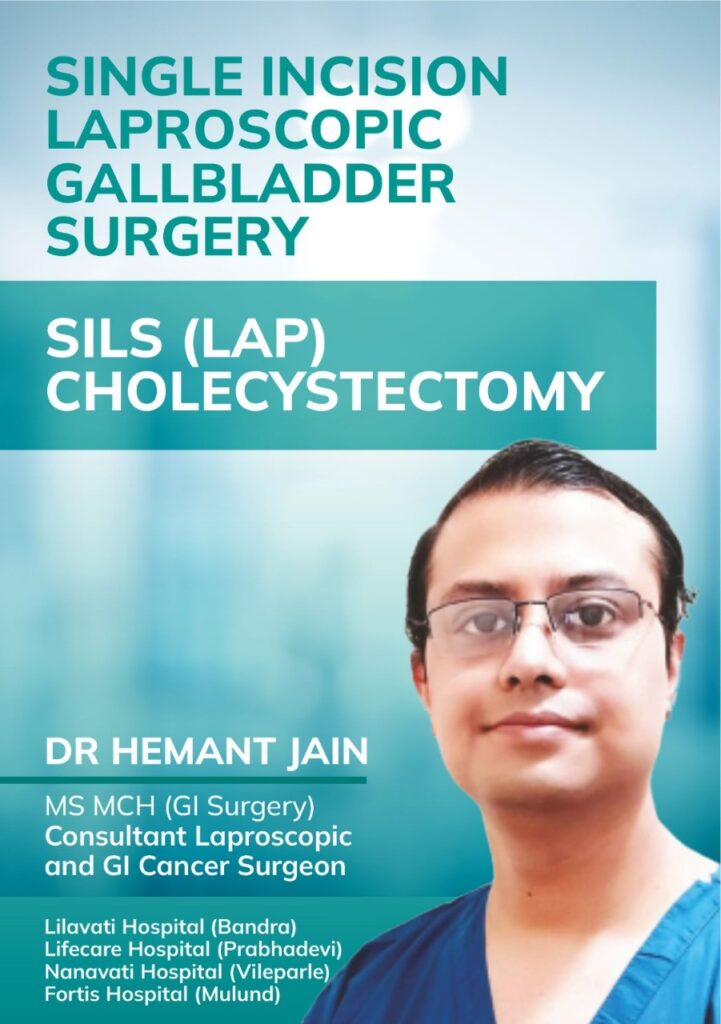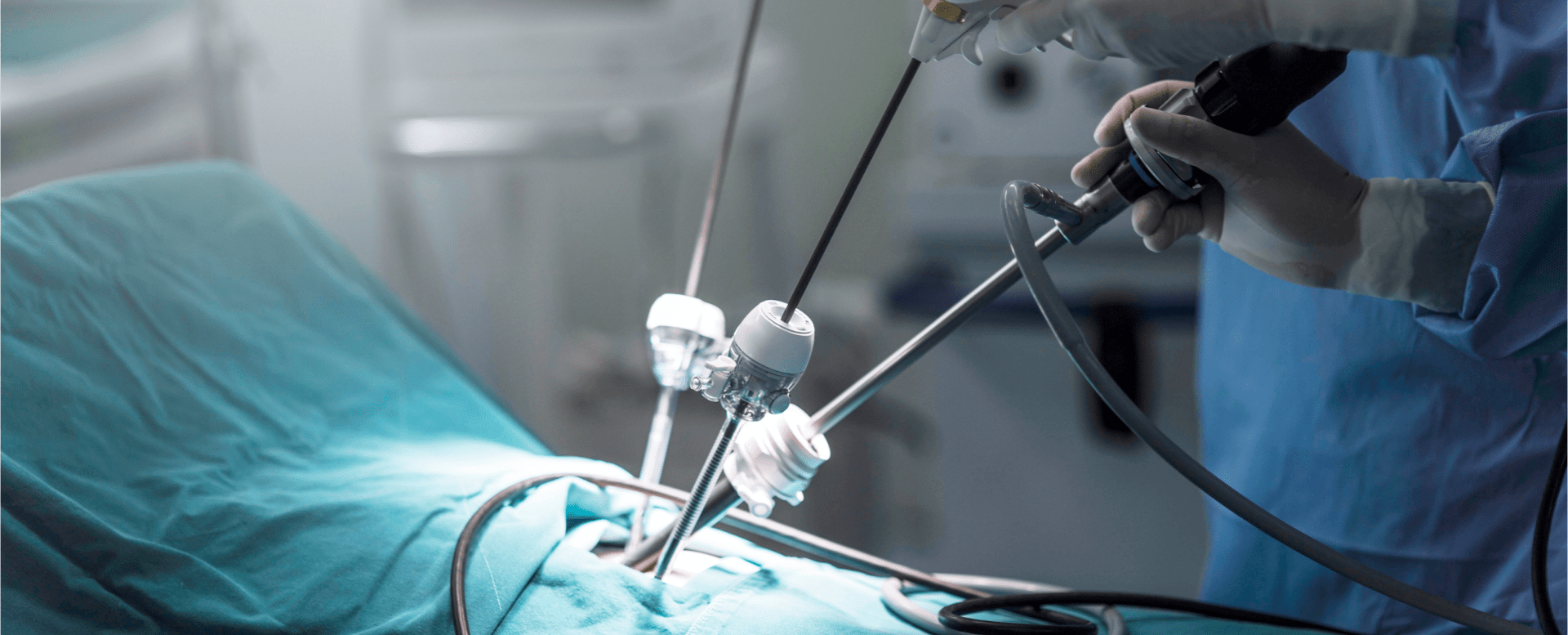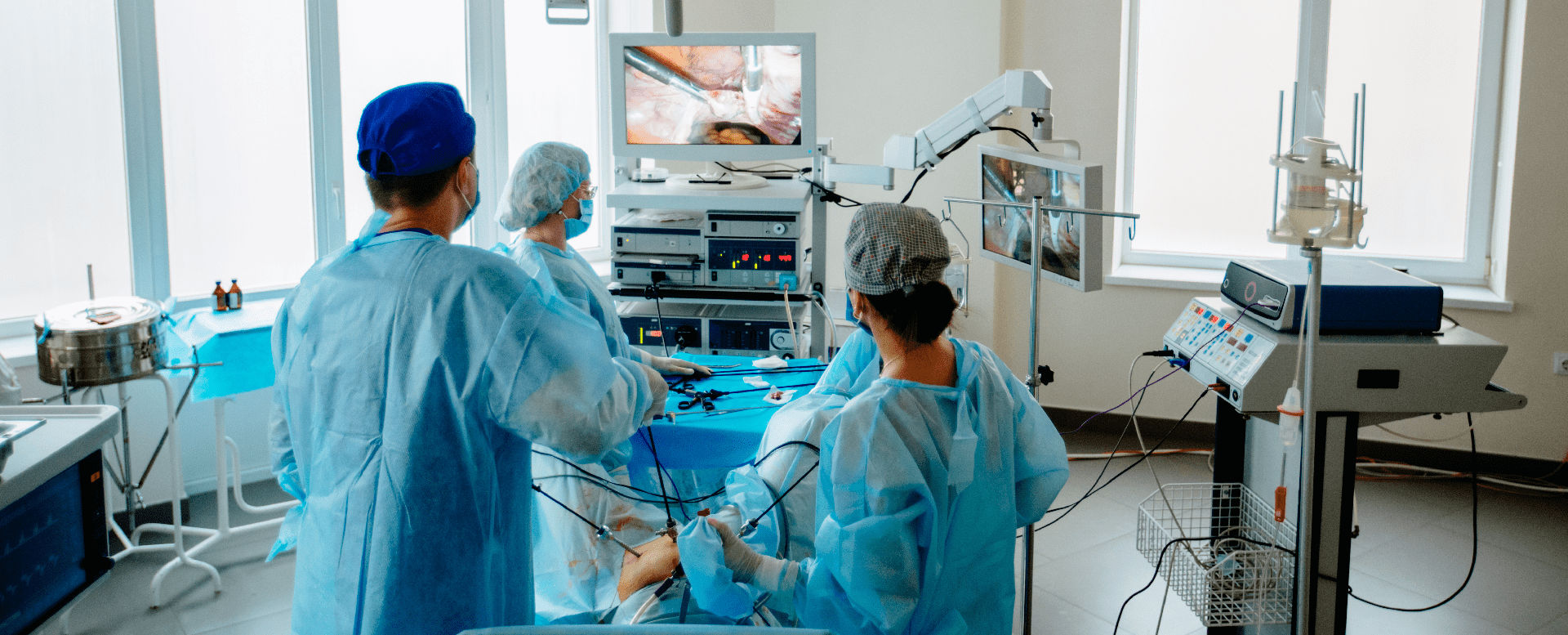Laparoscopic and Robotic Surgeon – Mumbai, Andheri, Mulund
About Dr. Hemant Jain
“A Journey Through Minimally Invasive Surgery.”
Dr. Hemant Jain, a leading expert in Single Incision Laparoscopic Surgery, as he delves into the remarkable transformation that Single Incision Laparoscopic Surgery has brought to the ever-evolving landscape of the medical field.
Dr. Hemant Jain is Senior Consultant Laparoscopic and Robotic Surgeon, GI Cancer Surgeon. He is an expert in Single Incision Laparoscopic Surgeries, Gastrointestinal Cancer Surgeries & Advanced Laparoscopic Surgeries. He is attached to multiple hospitals in Mumbai city including Lilavati Hospital Bandra, Nanavati Max Super Speciality Hospital, KIMS Hospital Thane, Indigo Hospital Mulund.
Our Vision
We strive to provide patient care that is:
- Honest
- Comprehensive
- Emphatic
- Affordable
- Personalised
- In sync with the latest protocols and guidelines

Our Expertise
Single Incision Laparoscopic Surgery
In SILS (Single incision laparoscopic Surgery) a single skin incision is placed over the umbilicus and three Laparoscopic instruments are introduced to complete the surgery. Final result is a scar within a scar (the umbilicus), which is barely visible
Advanced Laparoscopic Surgery
Over years have successfully done numerous advanced laparoscopic surgeries like Gastrectomy, Colectomy,Fundoplication, Rectopexy, Extended cholecystectomy, Cardiomyotomy, etc.
Gastrointestinal Cancer Surgery
Being a GI disease specialist, we deal in all aspects of GI Cancers with empathy and support that the disease demands .. for patients and relatives alike.
Why Choose Us?
FAQS
What is Laparoscopic Surgery?
Laparoscopic surgery is an advanced modern way of doing surgeries. The surgeon uses small incisions (cuts) on skin to introduce his instruments. Working space is created by inserting inert gas (Carbon dioxide). A camera captures the image and relays it in real time to the monitor placed in the operation theatre. The surgeon views this magnified image and operates. The magnification provides additional precision in execution of the planned surgery.
What are the advantages of Laparoscopic surgery?
With Laparoscopy the patient experiences significantly less pain, has a faster recovery and a shorter hospital stay. Laparoscopic surgery has revolutionised the practice of surgery. The way surgeons operate has undergone a sea change. Reduction in the size of incision reduces the associated trauma, hence recovery is faster and more comfortable compared to traditional open surgery.
What is Single incision Laparoscopic surgery?
With accumulating experience laparoscopic surgery has been adopted and used across the globe for a multitude of indications. A doctor is always in pursuit of ways and means to make patients more comfortable. We aim to decrease the size and number of cuts on skin, to reduce pain and improve cosmesis. This quest spurred many innovations and modifications like smaller 3 mm ports, decreased number of ports, single incision laparoscopic surgeries (SILS), etc.
In single incision laparoscopic surgery (SILS), a single small cut is made on the skin. Surgery is performed with three instruments introduced through this single skin incision.
What are the advantages of SILS - Single incision Laparoscopic surgery?
Single incision Laparoscopic surgery (SILS) is an almost scar less surgery. The surgery is done through a single skin incision over the navel (Umbilicus). Navel area is actually a scar we get when we are a kid. So in SILS, patients get a scar within a scar. The cosmesis in SILS is far superior to traditional laparoscopic surgery
Is single incision laparoscopic surgery (SILS) safe?
For a surgeon, the patient’s safety is of paramount importance. There are enough international studies and reports in medical literature attesting to the fact that Single incision laparoscopic surgery is safe compared to traditional laparoscopic surgery. The risks involved are the same as that for any laparoscopic procedure. With the multiple puncture technique that we use the maximum sheath incision is of 10 mm. This incision is closed securely with three stitches. Thus there is no increased risk of incision site complications.
Is commercial SILS port used in single incision laparoscopic surgery (SILS) ?
No, In our practice we do not use the commercial SILS port. Apart from the cost involved, the SILS port has a large diameter of around 3 cm.The incision required is larger with an anticipated increased risk of local complications like umbilical hernia.
What are the risks involved in Laparoscopic surgery?
Laparoscopic surgery is quite safe. It can be compared to driving on city roads. Even with the best safety gear in place,there is always a small risk to life with each drive. The same applies to surgery too. Every surgical procedure, no matter how small, is associated with small risks of bleeding, infection, risk to life, etc. There is a small risk of hernia developing in the long term at the site of incision (Navel).
It’s very rare to have one of these complications, but at the same time, the risk is not zero percent.
What is gallbladder and when does one need gallbladder surgery?
Gallbladder is a pear shaped organ located on the under surface of the liver in the right upper aspect of the abdomen. In normal health it is capable of distending and contracting significantly. Liver secretes a greenish coloured alkaline fluid called bile.
The function of Gallbladder is to store and concentrate the bile. When this function is disrupted, bile stagnates and leads to formation of stones (Gallstones).
Surgery for removal of Gallbladder (Cholecystectomy) is one of the most common laparoscopic surgeries performed. If gallstones cause pain or any other symptoms (Symptomatic gallstones) , then surgery is indicated and the gallbladder needs to be removed (laparoscopic cholecystectomy done). In case of silent gallstones (ones causing no significant symptoms) decision making is complicated and involves multiple factors like size of stone, incidence of gallbladder malignancy in local area, etc.
If my pain has decreased or resolved , Do i still need surgery?
Yes.
Two dreaded complications of gallstones are pancreatitis and bile duct obstruction. This happens due to slippage of stone from gallbladder further downstream into the bile ducts. No one can predict whether this complication will occur or when it will occur. But we know for sure that around 90 percent of patients who have one of these complications have had a symptom due to gallstones sometime in the past. Hence surgery is recommended for gallstones with symptoms like pain even if currently pain have resolved.
What are the long term consequences of gallbladder surgery?
After gallbladder removal surgery bile continuously trickles down into the intestine(storage function of gallbladder is lost). When gallbladder is healthy, intact and functioning food and bile mix in the 1st part of the small intestine (Duodenum). After gallbladder removal surgery, the mixing happens farther downstream in the 2nd part of the small intestine.
Also few patients experience a transient increase in dyspeptic symptoms (acidity) due to re flux of bile back into the stomach. These are usually mild and can usually be comfortably managed with diet and lifestyle modifications.
Appendix and gallbladder are two organs which can be safely removed without any significant long term consequences on health.
What is the average duration of hospital stay in gallbladder surgery?
With time, experience and standardization of protocols, duration of hospital stay has gradually decreased. In selected cases we can often discharge the patient on the day of surgery itself (Day care surgery). On an average for the routine patient 24 to 48 hrs of hospital stay isrequired
How many days are required for recovery after Gallbladder surgery?
Majority of patients are able to get back to their desk job within a week and start light jogging/walking around 7 – 10 days
What should I expect immediately after surgery?
After an uneventful surgery patients are allowed to drink liquids after 4 to 6 hours. They are encouraged to get out of bed and mobilize on the same day itself. There is technically no bed rest involved. Early mobilization makes the patient feel more confident. Soft diet starts in the evening. If the patient is stable and able to eat without discomfort, discharge is planned for the next day.
What are the precautions I need to take after surgery?
High protein diet is very important. Sutures taken by surgeons only approximate the tissue,actual healing is done by the body, and we need loads of proteins for the same. For the first 4 weeks after surgery patients are advised to have foods rich in proteins like Egg white, Animal meat, Paneer, Rajma,Chola, Sprouts,etc . Patients are instructed to avoid lifting heavy weights (approx >20 kg) for 6 weeks post surgery. Exercises which cause undue strain at the umbilicus are to be avoided. Patients are discouraged to do Leg Raise, Kapalbhati, etc
Is there any way in which I can avoid surgery?
There are some who advocate medical management of gallstones without surgery. Medicines don’t address the altered function of gallbladder. Thus even if stones decrease in size with medicines, the effect is not permanent. After stopping medicines, usually stones reform within 6 months. Hence in patients with stones and symptoms, it is not recommended to avoid surgery.
What happens if there is Iatrogenic (manmade) bile duct injury?
Bile duct injury is the most severe complication possible for this surgery.
In case of the rare occurrence of Bile duct injury, patients may require single or multiple Endoscopic or Surgical procedures.
What Our Clients Say
Our Latest Blogs
- Difficulty swallowing (Dysphagia)Food that we eat is broken to small pieces by teeth. After adequate grinding and mixing with saliva in mouth, we swallow the formed food bolus. It travels through the food pipe (Esophagus) and reaches stomach. Food pipe is a long muscular tube passing through the chest. It connects mouth with the stomach located in … Difficulty swallowing (Dysphagia)
- निगलने में कठिनाई (डिस्फेजिया)हमारे दांत खाने के छोटे-छोटे टुकड़े करता है। मुंह में लार के साथ पर्याप्त मिश्रण के बाद, हम भोजन के निवाले को निगलते है। यह भोजन नली (इसोफेगस) से होकर पेट तक पहुंचता है। फूड पाइप छाती से गुजरने वाली एक लंबी पेशी नली है। यह मुंह को पेट से जोड़ती है। भोजन के निवाले … निगलने में कठिनाई (डिस्फेजिया)
- पित्त की पथरी – कई परेशानियों की जड़हमारा शरीर भोजन पचाने के लिए विभिन्न पाचक रसों का इस्तमाल करता है। पैंक्रियास (अग्न्याशय) इसका एक अहम् स्रोत है। लिवर (यकृत) से निकले पित्त के विभिन्न कार्य है। इनमे से एक पाचक रसों में पाए गए एन्ज़ाइम को चिकनाई पचाने में मदद करना है। पित्ताशय लिवर के निचले हिस्से में स्थित एक गुब्बारे जैसा … पित्त की पथरी – कई परेशानियों की जड़



